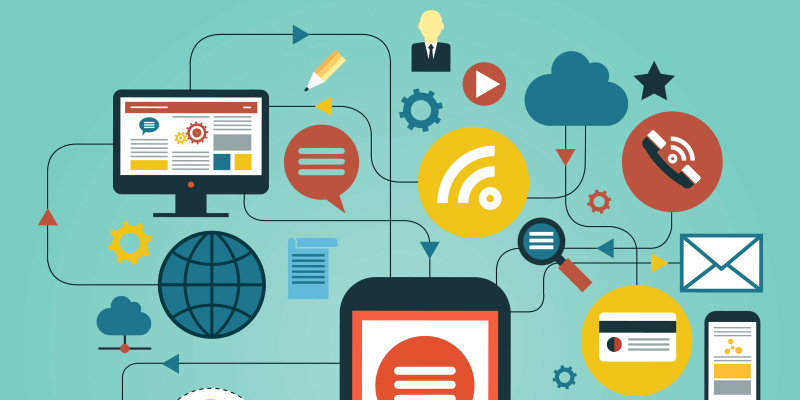
Updated on: April 4, 2019
The Digital Workplace Defined in 6 Traits
If you were asked to define a traditional workplace, what might you say? Office spaces. Boring, bland cubicles. Reams of paper. Computer equipment. Office supplies. Workers. For the most part, you’d be right, as those are some of the main descriptive terms to describe an office. But what happens when you’re asked to define the digital workplace? Suddenly, all of those aforementioned characteristics are non-existent.
You see, the digital workplace is not so much a thing, something that is tactile that you can touch or visibly describe, but rather it’s a sentiment. It’s a feeling; it’s working without boundaries or borders, without physical, emotional, or mental limitations.
Defined in six traits, here’s the digital workplace of today:
1. Adaptable
In traditional brick-and-mortar companies, there is usually a set way of doing things. And sometimes, that way of conducting business has been around since the company’s inception. Not so with the digital workplace of today. One of its biggest traits is its ability to be alive, so to speak—to adapt, bend, and change as needed.
2. Empowered
When you have a gaggle of remote workers spread out all over the country—or the world—you need to be able to make fast decisions. But what if your employee two time zones away needs an answer ASAP—and it’s the middle of the night where you are? A digital workplace demands that remote workers not only be accountable for their actions, but also empowered to make decisions that are in the best interest of the organization. This is achieved by clear communication between employer and employee of the company’s overall goals and mission in order to effectively make smart decisions.
3. Location-less
Sure, many people want to work from home, but are they actually in their home offices plugging away each and every day? Probably not. The digital workplace is not even necessarily a place at all, but rather a mindset that all employees are connected to each other by the systems and collaboration tools that they use, not that they are in any one location at any given time. After all, remote work can happen anywhere—and does.
4. Data-focused
Without regular offices, actual paper trails, and chats around a coffee machine, it’s easy for data to be misplaced, misinterpreted, or even lost. That’s why one of the biggest driving factors of the digital workplace (and its ultimate success) is the management and optimization of the data it generates. Not only does this data include policies, programs, and practices of the company, but it can (and should) house personal data too, including employee relationships, birthday, social events, and so on.
5. Flexible
By its very nature, a digital workplace is a flexible one. It allows workers to work from wherever they want, and oftentimes, whenever they want. But the interesting thing about today’s remote workers is that some of them don’t want to replicate a regular office in their home office; meaning, they don’t want to work full-time from home. Understanding that many job seekers want to be able to work temporarily as a freelancer or contract worker for a few months and then leave the company, perhaps to return a year later, is something that the digital workplace not only recognizes, but embraces.
6. Integrated
Naturally, it’s critical that your remote workers work well with each other, sharing a connection beyond business that hopefully includes collegial admiration and respect. This can be achieved through consistent company culture initiatives such as get-togethers and meet-ups, collaboration tools that allow workers to share personal aspects of their life, and retreats as well.
Savvy hiring managers know that well-rounded, networked individuals not only produce great work, but also bring critical insights from their daily lives into the company, which in turn only makes it stronger. Being savvy during the job interview process to note these connected job seekers is a win/win for the company. Not only will they talk about and promote your business, but allowing them to showcase their many talents in their job will not only help make your company stronger in terms of financial success, but will create a loyal, dedicated workforce, too.
Even as we speak, the digital workplace continues to change and grow. Companies that capture the essence of the digital workplace will be in a better position to attract and retain top-tier telecommuting talent that will help bring their organizations to the next level.
By Emily Hastings | Categories: Remote Management



